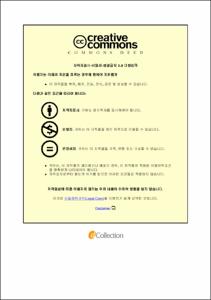알부민 잉크의 와이핑 그라비어 인쇄적성에 관한 연구
- Alternative Title
- A Study on the Wiping Gravure Printability of Albumin Inks
- Abstract
- Recent developments of cell-based biosensors, tissue engineering to reproduce complex organ functions, and the development of transplanted cells or organ assisted external devices have continued as the development and applications of engineering structures and devices that utilize living cell functions in biology and medicine come. Neurons, which are the smallest intercellular information movement pathways in the human body, require the development of mass transfer processes between biological elements. The neurons, which are the smallest in the human body structure, are used for bio printing and bio patterning necessary for regeneration of each pattern, Research has continued.
In the semiconductor market, we are confronted with limitations of technology that must make electronic components smaller than nano size. As a new growth field, we are actively converging with biotechnology. In order to manufacture nano biotechnology such as proteins and genomes, and information technologies that process large amounts of information quickly and accurately.
The gravure printing method, which is widely used in the production of printed electronic parts and can be manufactured at low cost and in mass production, has been adopted for the production of bio-semiconductor devices using biotechnology.
In particular, since the wiping gravure method uses an ink containing a mixture of a resin and a solvent, there is no need for tenacity and no peeling, and the application range of the printed electronic component is wide because it can be printed on paper, resin, and metal.
In this study, the filling and flow of the ink into the cell was analyzed, and it was experimentally and simulated that the sagging phenomenon of the albumin ink and the change of the flow phenomenon were affected by the printing speed, pressure, ink viscosity, cell shape and depth respectively.
Therefore, if the physical properties of the albumin ink and the gravure cell are determined in accordance with the printing conditions and characteristics and the shape and depth of the gravure cell are adjusted in the production of the bio semiconductor by the wiping gravure method using the albumin ink, This result can be usefully used to find the optimal printing conditions.
- Issued Date
- 2019
- Awarded Date
- 2019. 8
- Type
- Dissertation
- Publisher
- 부경대학교
- Alternative Author(s)
- Jung Seok Shin
- Affiliation
- 부경대학교 대학원
- Department
- 대학원 인쇄공학과
- Advisor
- 윤종태
- Table Of Contents
- Ⅰ. 서론 1
Ⅱ. 이론 4
1.와이핑 그라비어 인쇄 4
2.그라비어 잉크 7
3.그라비어 셀 잉크 충진 10
4. 잉크 전이방정식 11
4-1. Walker-Fetsko의 전이방정식 11
4-1-1.용지의 피복면적비(값) 11
4-1-2.고정잉크의 개념(값) 13
4-1-3.자유잉크의 분열(값) 14
4-2. Tollenaar의 정수 18
4-3. Tollenaar의 PD-IR 그래프 19
4-4. 잉크 전이량과 콘트라스트 23
5. 시뮬레이션(Simulation) 25
5-1.시뮬레이션 배경과 방법 26
5-2.시뮬레이션 구성 28
5-2-1.Geometry 29
5-2-2.Mesh 29
5-2-3.Polydata 30
5-2-4.Polyflow 30
Ⅲ. 실험 31
1.실험 재료 31
1-1.알부민 31
1-2.소포제 31
1-3.증점제 31
1-4.착색제(안료) 32
1-5.컨벤셔널 그라비어 인쇄판 제작 32
2.실험 장비 34
2-1.그라비어 인쇄적성시험기 34
2-2.점도계 36
2-3. 농도계 38
2-4. 레오메타 38
2-5. 잉크건조시험기 39
2-6. 광학현미경 40
3.실험 방법 40
3-1.알부민 잉크 제조 40
3-2.와이핑 그라비어 인쇄적성 실험 41
3-3.시뮬레이션 44
Ⅳ. 결과 및 고찰47
1. 알부민 함량에 따른 잉크 레올로지 실험 결과 47
2. 인쇄 조건에 따른 인쇄 농도 변화 실험 결과 48
2-1. 알부민 잉크의 인쇄 조건에 따른 인쇄 농도 48
2-2. 착색된 알부민 잉크의 인쇄 조건에 따른 인쇄 농도 55
2-3. 셀 깊이에 따른 착색된 알부민 잉크의 인쇄 농도 74
3. 인쇄 조건에 따른 잉크 피복면적비 변화 실험 결과 76
4. 컨벤셔널 그라비어 인쇄판 잉크 유동 실험 결과 82
4-1.인쇄 압력에 따른 잉크 유동 82
4-1-1.그라비어 실험 결과 82
4-1-2.시뮬레이션 결과 85
4-2.인쇄 속도에 따른 잉크 유동 87
4-2-1.그라비어 실험 결과 87
4-2-2.시뮬레이션 결과 91
4-3.인쇄 압력 및 인쇄 속도에 따른 잉크 유동 실험 결과 93
5. 시뮬레이션 결과 비교 94
Ⅴ. 결론 97
참고 문헌 99
- Degree
- Doctor
- Files in This Item:
-
-
Download
 알부민 잉크의 와이핑 그라비어 인쇄적성에 관한 연구.pdf
기타 데이터 / 2.96 MB / Adobe PDF
알부민 잉크의 와이핑 그라비어 인쇄적성에 관한 연구.pdf
기타 데이터 / 2.96 MB / Adobe PDF
-
Items in Repository are protected by copyright, with all rights reserved, unless otherwise indicated.